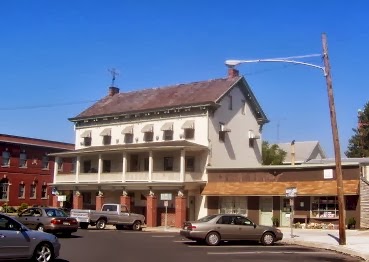This time of year the words “Christmas” and “tradition” seem to go hand in hand.
 |
| Tomte - a Swedish Christmas symbol |
My husband’s family, for instance, is from Sweden. Their Christmas decor includes St. Lucia, Star Boys and Tomte.
I’ve never considered anything my family for Christmas did unique — until I’ve brought it up in conversation. The response I get when I mention my Christmas memories of enjoying a Clear Toy is usually a raised eyebrow.
I’m Pennsylvania Dutch, but that doesn’t mean I ride to the office in a buggy. In a nutshell, the Pennsylvania Dutch (or Pennsylvania German) trace their ancestry back to the Palatinate of the Rhine. This group arrived in Pennsylvania before the American Revolution and is comprised of a variety of religions — including Anabaptists such as the Amish.
Enough talk of ancestry and history. Christmas is tomorrow and here’s a sample of what I and my fellow PA Dutch enjoy.
Bayberry candles
 If there was one “tradition” my family did at Christmas, it was the lighting of the Bayberry candle.
If there was one “tradition” my family did at Christmas, it was the lighting of the Bayberry candle. My dad would burn the candle every Christmas Eve to ward off evil spirits, as I was told. I believe this tradition was passed down from his grandmother. The candle is supposed to burn all night long. Other legends advise that the candle should be burned to the socket for good luck and wealth.
My mom usually sat the thing in a pot in the sink. I mean, who isn’t just a little nervous about a candle burning unattended all night? For that reason, as much as I love the scent of Bayberry, I don’t burn the candle. Instead I go the battery operated route on Christmas Eve.
Another sign of the season was the appearance of a box of Clear Toys.
These are hard, sugary candies made in the shape of animals, Christmas symbols or toys. Usually they are colored red, green or yellow.
 |
| An assortment of Clear Toys |
To satisfy my current Clear Toy craving I’d have to hop in the car and embark on a 12-hour drive. After living in La Porte County for nearly 25 years, I haven’t had too many opportunities to indulge in these treats.
Clear Toys can be found on the internet, but the price is a bit steep for me. Most online shops don’t guarantee that they will arrive in one piece.
Mince Pies
Mincemeat pies originated in Great Britain and, at some point, were adopted by the Pennsylvania Dutch.
Made of mincemeat, raisins and a conglomeration of other stuff, this dessert is kept warm in the oven until Christmas dinner is over. Mincemeat can be made from real meat or bought in a jar.
Even though my father will describe a mince pie as “more-ish” — a Pennsylvania Dutch word meaning you want more of it — I really don’t have the same feeling for it. Maybe I just need to grow into it.
The Belschnickle
The Belschnickle is just about the kind of Santa Claus I’d get. After being well versed in the likes of scrapple, red beat eggs and hog maw, I’m surprised that I had never heard of this guy until recently.
Certain areas of Pennsylvania Dutch Country still embrace him, but perhaps he doesn’t have the appeal that the more common St. Nick does. After all, he carries a pack of switches instead of a bag of gifts.
A grouchy bearded man, usually garbed in brown fur, the Belschnickle, is said to show up at your house prior to Christmas — and he knows who has been naughty. He either quizzes the children, and sometimes the adults, or asks that a song be sung. After that task is completed, he’ll toss candy on the floor.
Just don’t jump for the treats too soon or you’ll be on receiving end of his switch.
Whatever you celebrate this season, I wish you well. Live it up and enjoy the moments you have with your loved ones.
This column originally ran in the Dec. 24, 2013 edition of the La Porte County Herald-Argus














